Ophel Excavation 2024 Update: Meet the Ophel Family
What is the most important part of an archaeological excavation? Some might say it’s the discoveries. After all, the goal of archaeology is to collect and examine data so you can learn more about ancient cultures and peoples. Perhaps it’s the coins, which allow you to date layers on the excavation site. Or maybe it’s the monumental architecture—the walls that give insight into how people lived.
But what about the individuals who make the excavation possible? Without the directors, area supervisors, logistics managers, office workers and volunteers, there wouldn’t be anyone collecting and examining the data.
During this year’s Ophel excavation, we had between 30 to 40 people on the dig site each day. Every volunteer performed an important role, and we are very grateful to each person who participated in this year’s excavation. With the war situation in Israel, the circumstances under which we excavated were unique. Those who participated showed a degree of tenacity and commitment to the field of archaeology by coming to the dig site each and every day. For that, we are extremely grateful.
The Armstrong Institute of Biblical Archaeology (aiba) would like to take this opportunity to recognize and introduce to you what we consider to be the Ophel family.
Dedicated Directors
Any successful excavation has to have leadership at the top directing it all. At aiba, this is our founder and editor in chief, Gerald Flurry. Mr. Flurry has studied biblical history and ancient Jerusalem since 1961; his vision and love for Jerusalem fuels our participation. His interest and involvement in all of our archaeological endeavors gives our team tremendous comfort and encouragement.
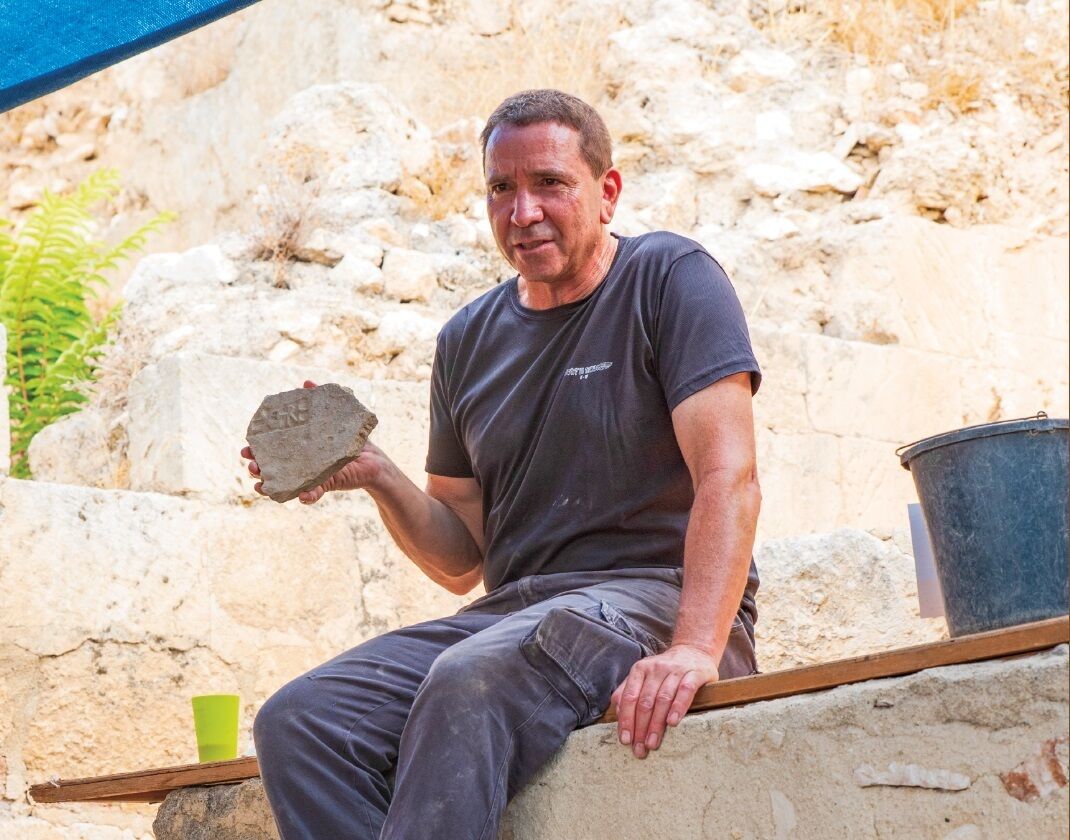
Then there is the leadership on the ground. Two of the first faces you’ll see on the dig site when you arrive each morning are the codirectors: Prof. Uzi Leibner and Dr. Orit Peleg-Barkat. Both are professional, experienced archaeologists and both work at Hebrew University in Jerusalem.
Like many successful leaders, both directors throughout the course of the excavation day visit the trenches and cheerfully circulate among the troops. Visit the dig on any given day and you’ll likely see Professor Leibner or Dr. Peleg-Barkat helping with field work, be it participating in bucket lines, operating the metal detector, or on their hands and knees excavating within the various loci.

When not in the field, they are in the office, handling various responsibilities and dealing with the respective authorities that allow excavations to take place.
They also provide constant guidance and education. Every morning, the crew pauses for the first break: “breakfast.” During this break, the directors will often conduct a “show and tell” of finds from either that day or the day before. They use the opportunity to explain the significance of the finds and what they tell us about the Ophel.
Both directors are born teachers. In a way, they encapsulate the maxim in Proverbs 29:18: “Where there is no vision, the people perish” (King James Version). They know that for each volunteer to remain motivated—to endure the scorching heat and blistered hands—we need to catch the vision. That we need to understand what we are seeing and unearthing, and why it is important that we dig it from the ground. These daily “show and tell” sessions with Professor Leibner and Dr. Peleg-Barkat are among our favorite moments of the excavation.
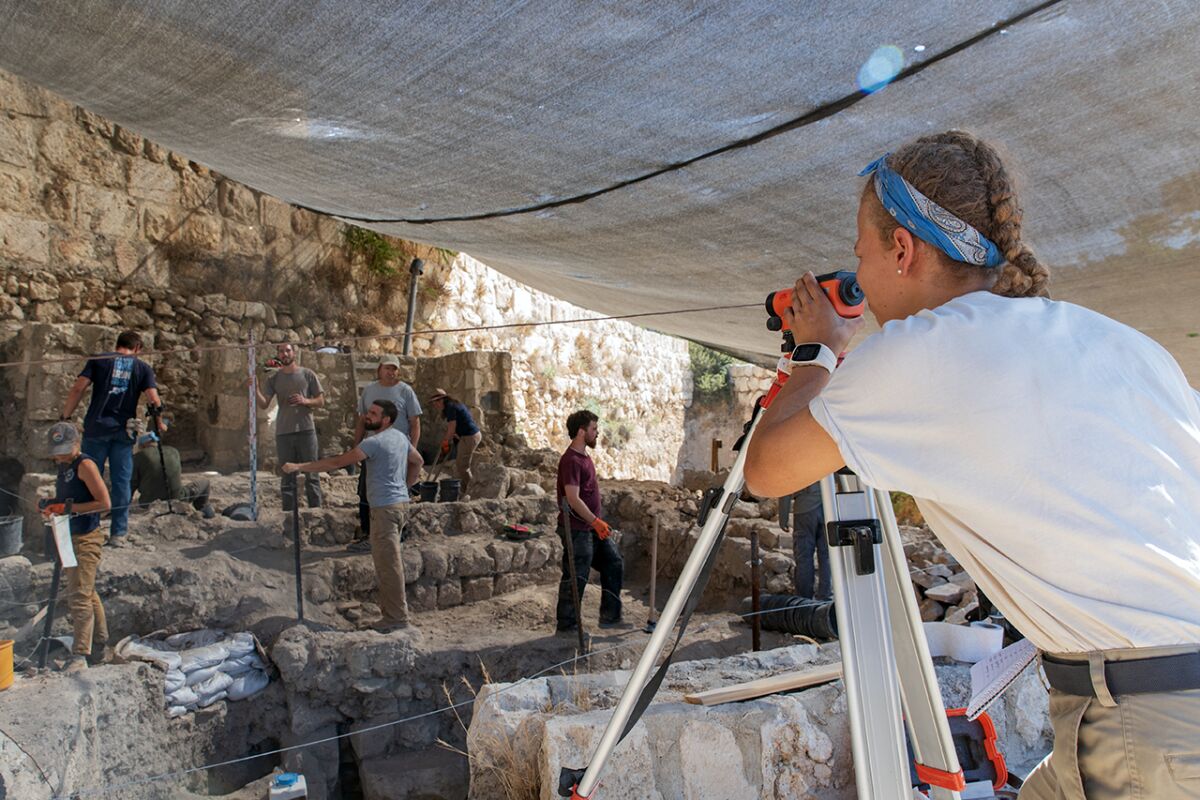
Superior Supervision
The 2024 excavation was divided between two areas: Area D and Area D1. Work in each area is overseen by an area supervisor, each of whom reports directly to the directors.
Volunteers in Area D, a large Byzantine structure on the western edge of the site, were supervised by Amir Cohen-Klonymous. He studied archaeology at Ben Gurion University. This was his seventh season working on the Ophel. In 2006 and 2007, he worked in the City of David under the leadership of Dr. Eilat Mazar.

Amir was assisted by Akiva Goldenhersh and Aviv Shalom, students at Hebrew University.

Area D1 was supervised by Christopher Eames. This was his sixth year excavating on the Ophel and his fourth season supervising. Chris was assisted by Hebrew University studends Nadav Rozenthal and Amihai Lifschitz, as well as Willow Powell, a student of Herbert W. Armstrong College.
During the end-of-season dinner on September 26, Professor Leibner said: “We were blessed with two outstanding area supervisors who are not only professional field archaeologists, but they also know how to lead people.”
Office and Logistics
Excavating during the months of August and September means excavating in some of the hottest and sunniest conditions. Temperatures often exceed 90 degrees Fahrenheit and there isn’t a cloud in the sky. This is the reason the entire site is covered with shade cloth. But these shades don’t just appear, and they don’t always stay in place. Someone has to coordinate their assembly. To make sure such tasks are carried out, we have a logistics manager: Yedidya Tzabari.
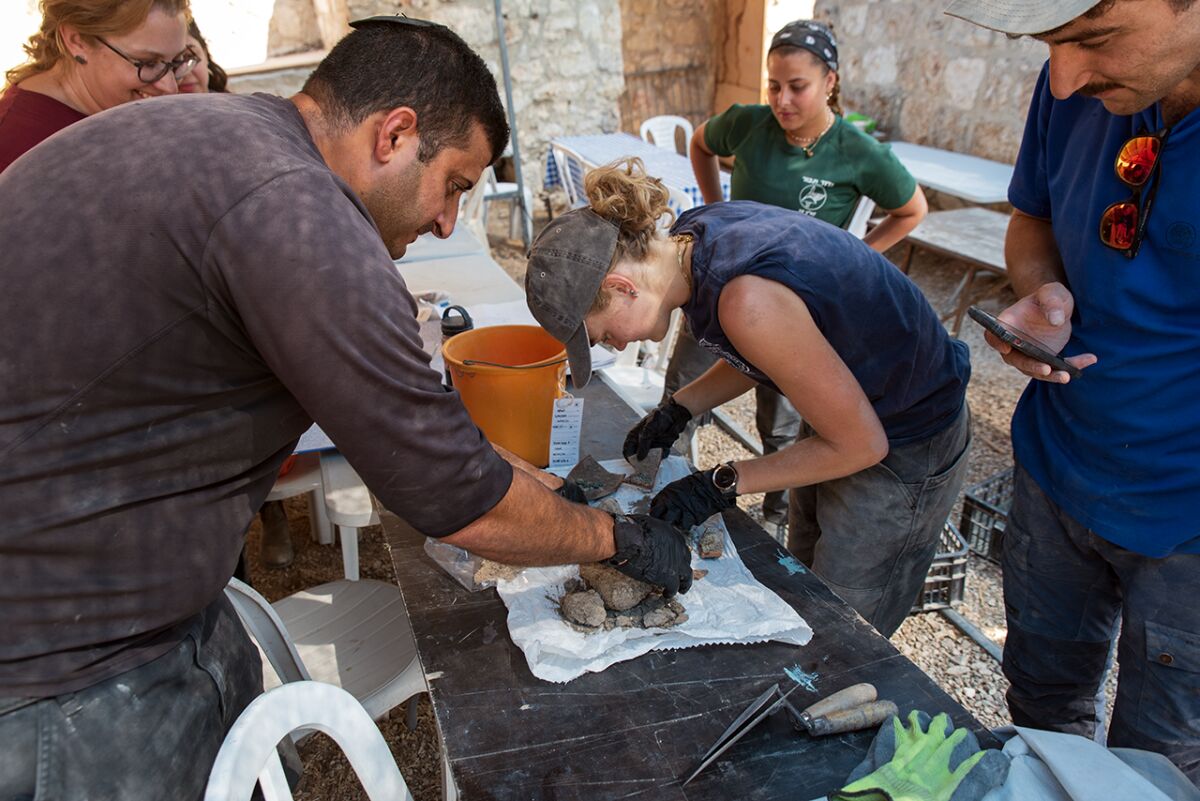
Yedidya doesn’t just play in the shade. It is his job to make sure the entire Ophel team is equipped with the proper tools and can safely walk around the site, which is a minefield of walls, stones, ledges, pits and makeshift wooden ladders and paths. If the sledgehammer breaks, or your gloves develop holes, Yedidya is the man to see. He also provides each meal on the dig site, oversees the safety of the diggers, and gives general guidance on the best way to remove walls or break stones.
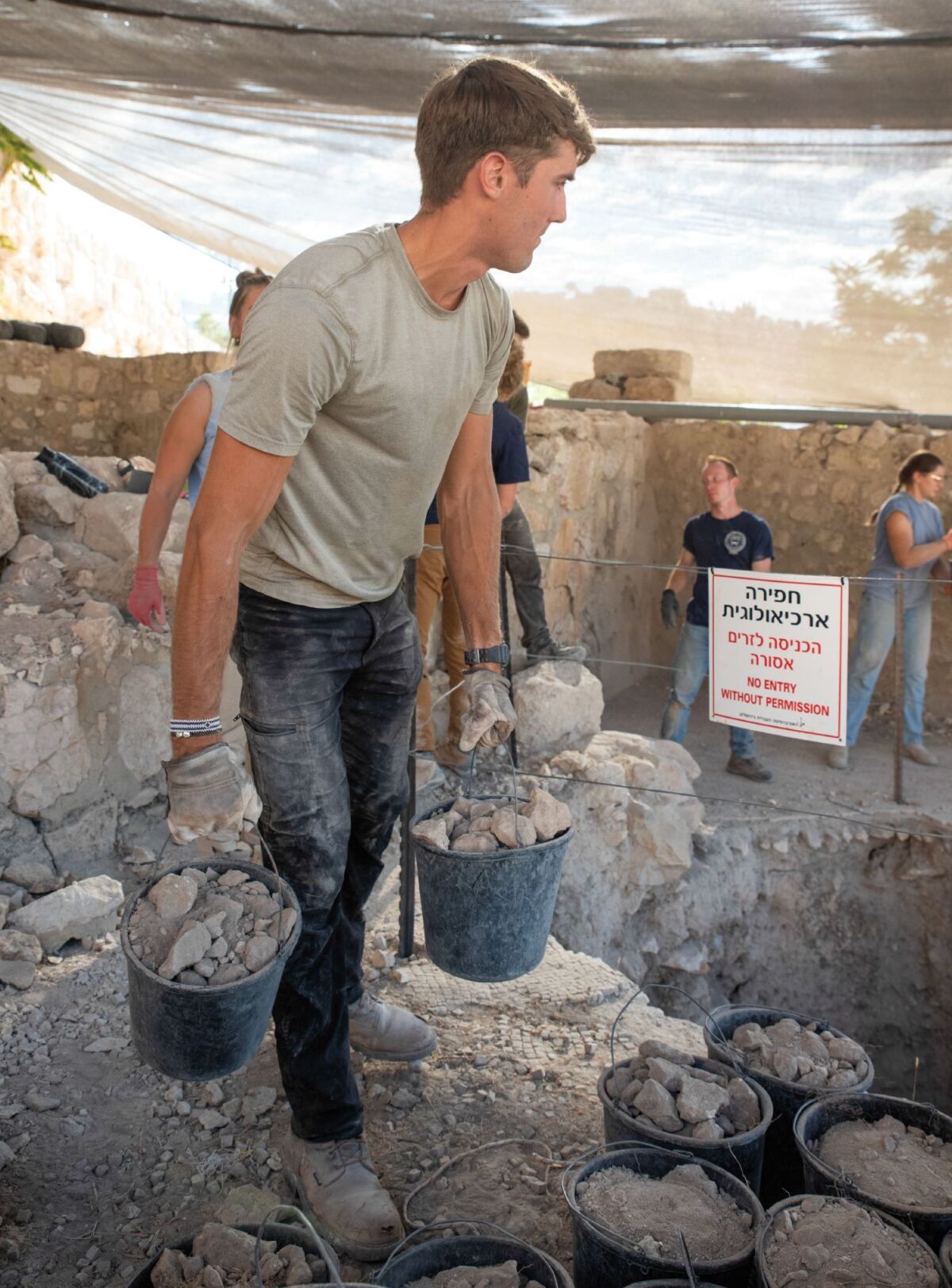
Yedidya is a trained archaeologist and actually made one of the season’s first discoveries: a coin lying on top of a wall. The coin caught his eye as he was walking the dig site on the first day. (The first discovery of the year was made that same day by Christopher Eames; he found a Herodian cornice stone.)
In addition to the logistics manager, you also need staff in the office coordinating volunteers, registering the finds, and organizing all documentation. This job was carried out by Shoham Buskila, the registration manager. She was assisted by Daphna Shen. On occasion, they could also be found in the field observing the excavation progress. Daphna also tried her hand at breaking rocks and joining in bucket lines.
Shoham and Daphna also worked closely with Shlomo, who managed the pottery-washing and wet-sifting station. A handful of volunteers would be assigned to Shlomo every morning, and together they would spend the day emptying buckets of fill onto screens, where it would be washed with water, a process that separated worthless soil from important pottery and other tiny artifacts.

Finally, there’s the official dig photographer, responsible for documenting the whole process, including finds as they come from the ground. The 2024 Ophel photographer was Aubrey Mercado, a graduate of Armstrong College and a much-loved member of the Armstrong Institute of Biblical Archaeology team. At the September 26 dinner, Professor Leibner highlighted what a unique “privilege” it was to have Aubrey as the on-site photographer. Many excavations typically bring a photographer in at the end of a dig. To have Aubrey there from start to finish, photographing the progress in each loci, was a unique privilege, and we’re very grateful for her many hours of labor to capture and process each photo.
https://www.youtube.com/watch?v=XYB_VgBs3oQ
The Workforce
The majority of the labor at the Ophel excavation is provided by volunteers, many of whom signed up through Hebrew University to work for a portion or the entirety of the five-week dig. It is an eclectic group too; this year we had, among others, a banker, a high school teacher, a cybersecurity officer, a nurse, engineers, tour guides—great people from all walks of life.

They come from all over the globe too. We had volunteers from Argentina, Australia, Canada, China, the Czech Republic, Finland, France, Germany, India, Israel, the Netherlands, New Zealand, Singapore, the United Kingdom and the United States. Almost all of these people pay their own expenses, which is remarkable considering the experience, while tremendously rewarding, is also tremendously challenging.
The excavation schedule is grueling. Dig volunteers arrive on-site at 6:15 a.m. (We start early so we can avoid excavating in the heat of the day.) For many, the alarm sounds between 4 and 5 a.m. The dig day ends at 1:30 p.m. After arriving at the site, each volunteer goes to his or her respective area. Area D, on average, had about 20 people, while Area D1 had 10 to 15.
Volunteers are given instructions from the area supervisors. Some might begin cleaning an area for photos; some might continue excavating a particular locus; others might grab sledgehammers and start smashing gigantic stones (large stones cannot be lifted from the site; they need to be broken into smaller pieces that are easier to handle).
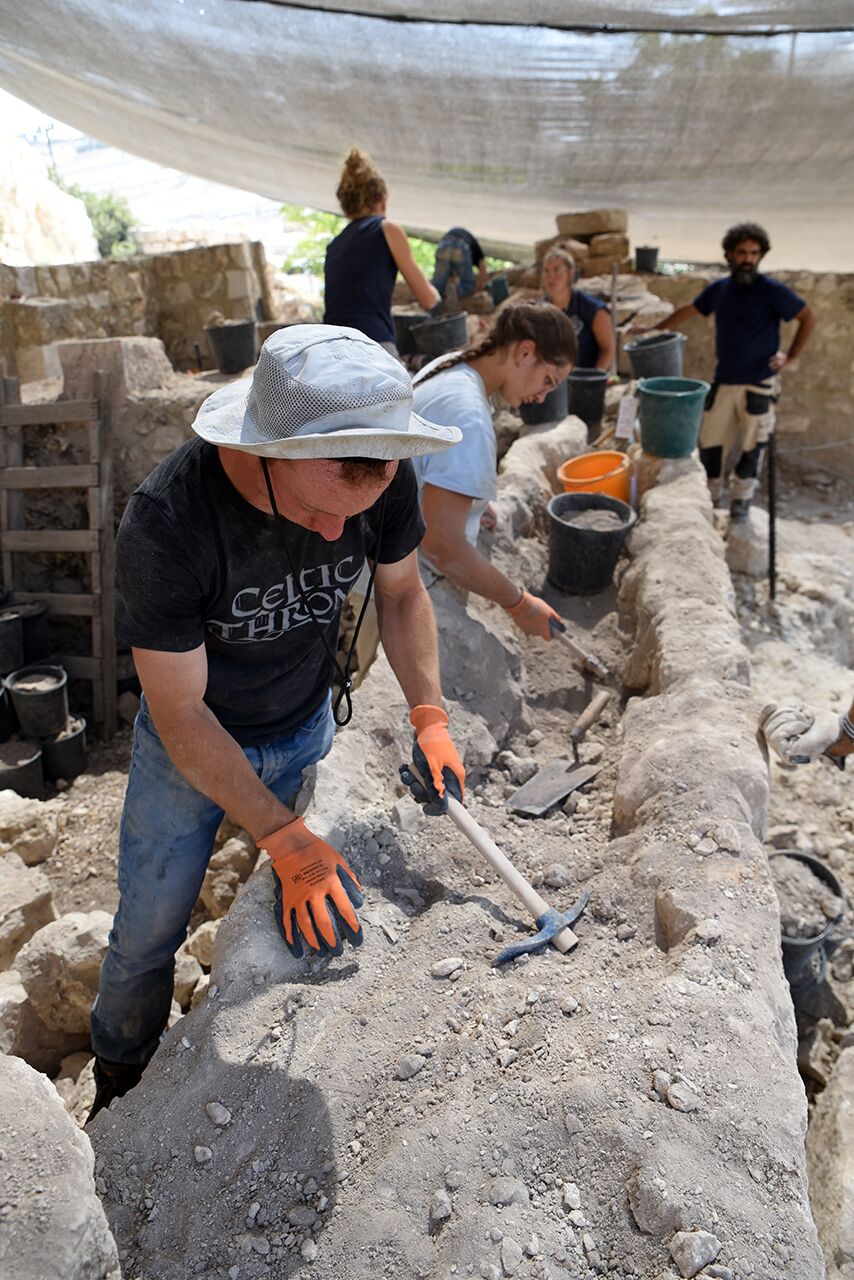
As the day progresses and buckets are filled, the moment eventually arrives when dozens to hundreds of buckets need to be removed from the area. It’s time for a “sharsheret,” or bucket chain! The signal goes out, and the team gathers. Each person stands about an arms-length from the other, and the line stretches from the bucket pile to the large steel bucket connected to a crane. With everyone in place, the buckets are passed down the line and eventually emptied into the steel bucket. Everyone loves these sharsheret moments, which are always accompanied by plenty of jokes, friendly banter and even sing-alongs.
Once the large bucket is filled, the crane operator lifts it to the top and dumps the fill in a pile. It’s ready for Alaa and his minitractor to come along and scoop it up and take it to a gigantic dumpster, where the excavated earth will finally be removed via truck.
This isn’t the only method for removing the dirt and stones. This season, we also did two “baalot nights.” Since Area D1 is the lower of the two areas, it wasn’t always efficient to haul all the large stones and rubble from the area up the stairs to the crane bucket. Instead, D1 volunteers filled large bags called baalot, which varied between half-ton and 1-ton bags. Like the smaller buckets, these massive baalot bags would pile up and would eventually have to be taken away.
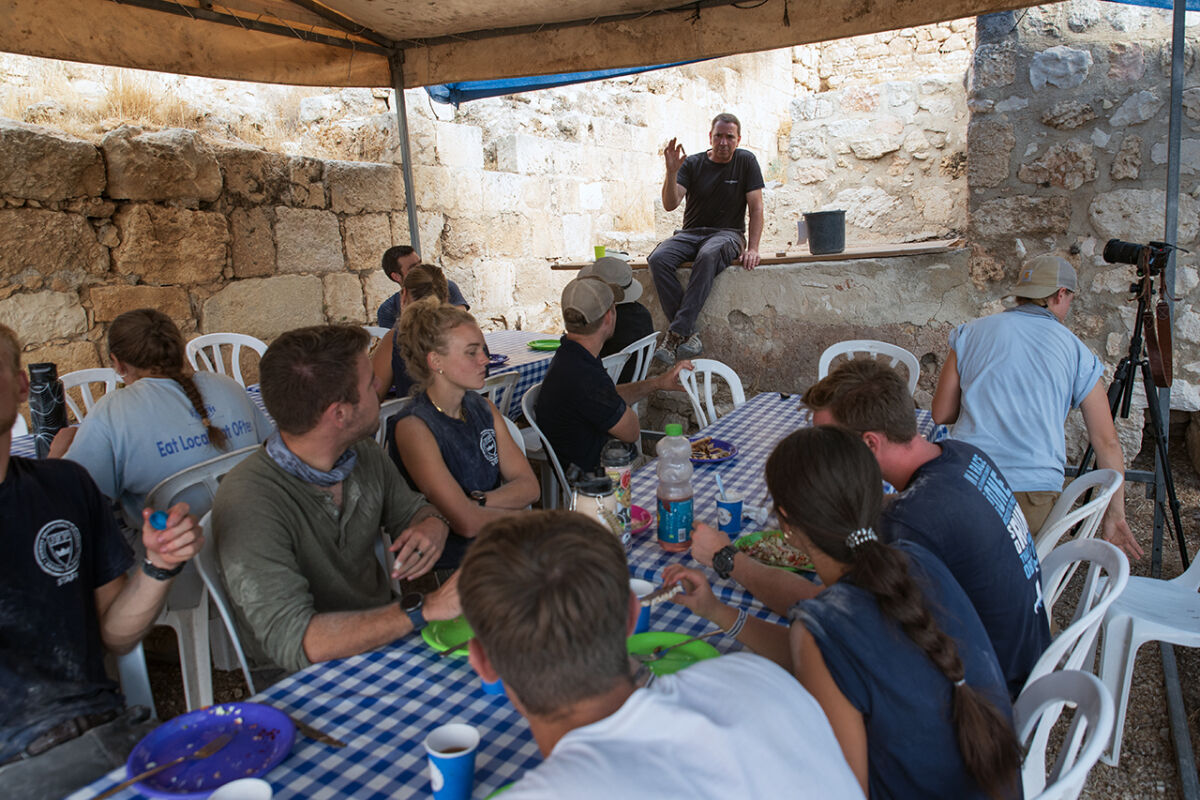
On baalot nights, a good friend of ours named Moti (short for Mordecai)—someone we have worked with since the early days excavating with Eilat Mazar—brought his large crane truck to the site. He parked on the Ophel Road across from Area D1 and used his crane to lift the bags from the large mikveh to a dump truck, where two of our student volunteers stood ready to cut the bags. This whole process occurred between 11 p.m. and 2 a.m., when the Ophel Road is less busy.
The first baalot night, Moti hauled away 120 bags; the second night, he took 100 bags.
This year, it’s roughly estimated that we removed around 300 tons of dirt and stones from the site. That would not have been possible were it not for the dedicated volunteers who gave of their time and energy.
It’s a sacrifice to volunteer for the Ophel excavation. But it’s also a fantastic opportunity to learn about archaeology and the history of Israel and to develop friendships and long-lasting bonds in the Ophel family.
Thank you to all involved. We look forward to another productive season in 2025!